Affiliate links on Android Authority may earn us a commission. Learn more.
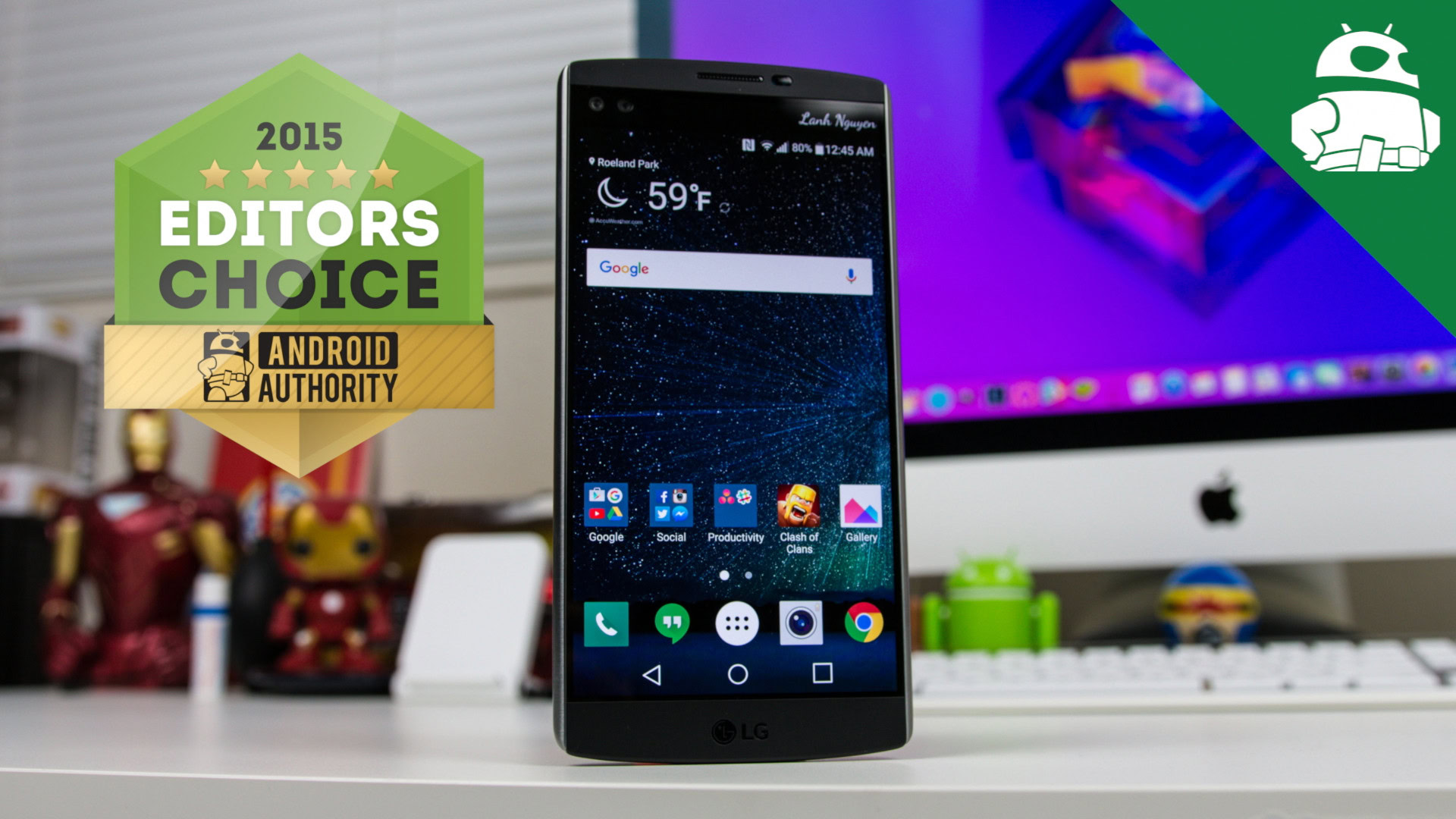
LG V10
What we like
What we don't like
Our scores
LG V10
LG’s new V series is the company’s latest attempt at capturing the premium smartphone market. With the first device of the series featuring a unique form factor, new multi-media capabilities and enhanced durability, the latest flagship offering from LG does a bring a lot to the table, but is it enough to make this smartphone a compelling choice? We find out, in this comprehensive LG V10 review!
[related_videos title=”Related Videos” align=”center” type=”custom” videos=”645944,646072,646220,606876″]
Design
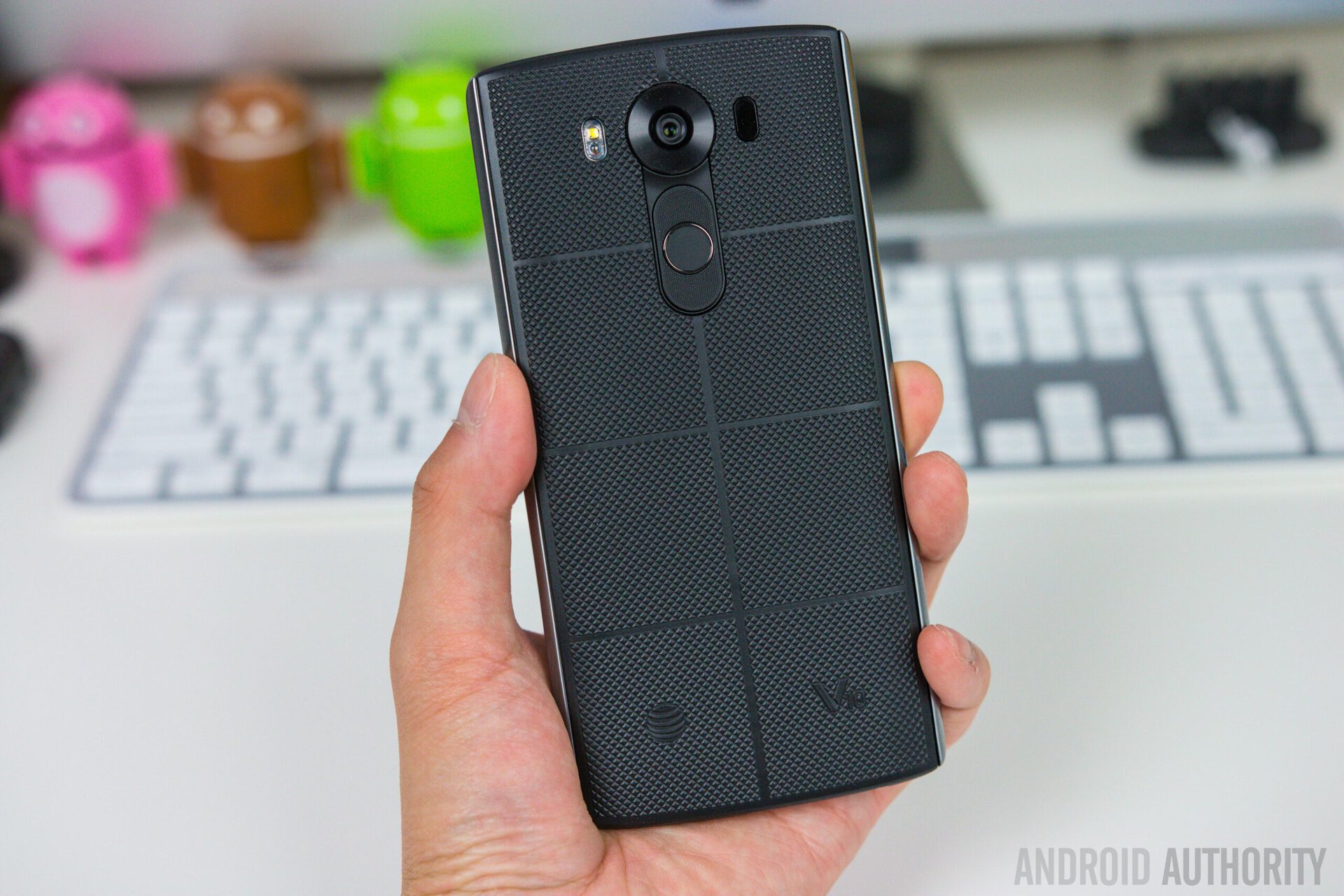
LG has never been known for making the most premium of smartphones, focusing instead on function over form with their flagship offerings. With the V10, LG is attempting to offer the best of both worlds with the sides made of 316L stainless steel and a body that is wrapped in DuraSkin. The DuraSkin coating is very soft to the touch and provides a lot of grip.
Aside from giving the V10 a very sturdy look and feel, these new material choices make for an extremely durable device. The V10 is MIL-STD-810G certified for shock resistance. As seen in our LG V10 drop test, the device may not be indestructible and the display certainly isn’t shatterproof, but it can handle the average drop much better than most other flagship smartphones out there.

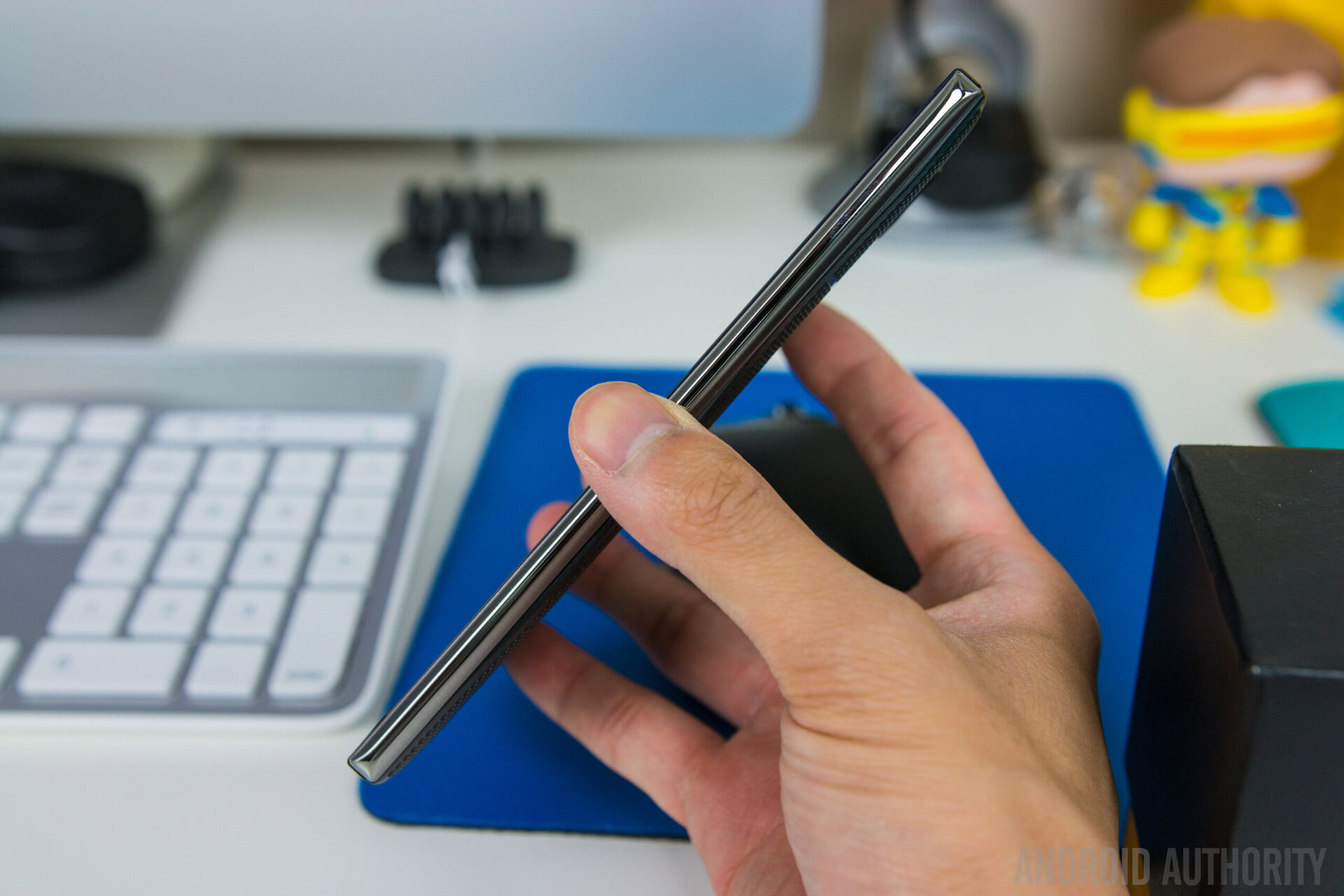
There’s no mistaking the V10 for anything other than a LG smartphone though, with the device borrowing a lot of its design cues from its flagship counterpart, the LG G4. Both LG devices feature sharp corners and a slightly rounded top and bottom. The exception here is that the V10 is a completely flat device and doesn’t have the signature curved body that we’ve seen in other LG flagships this year.
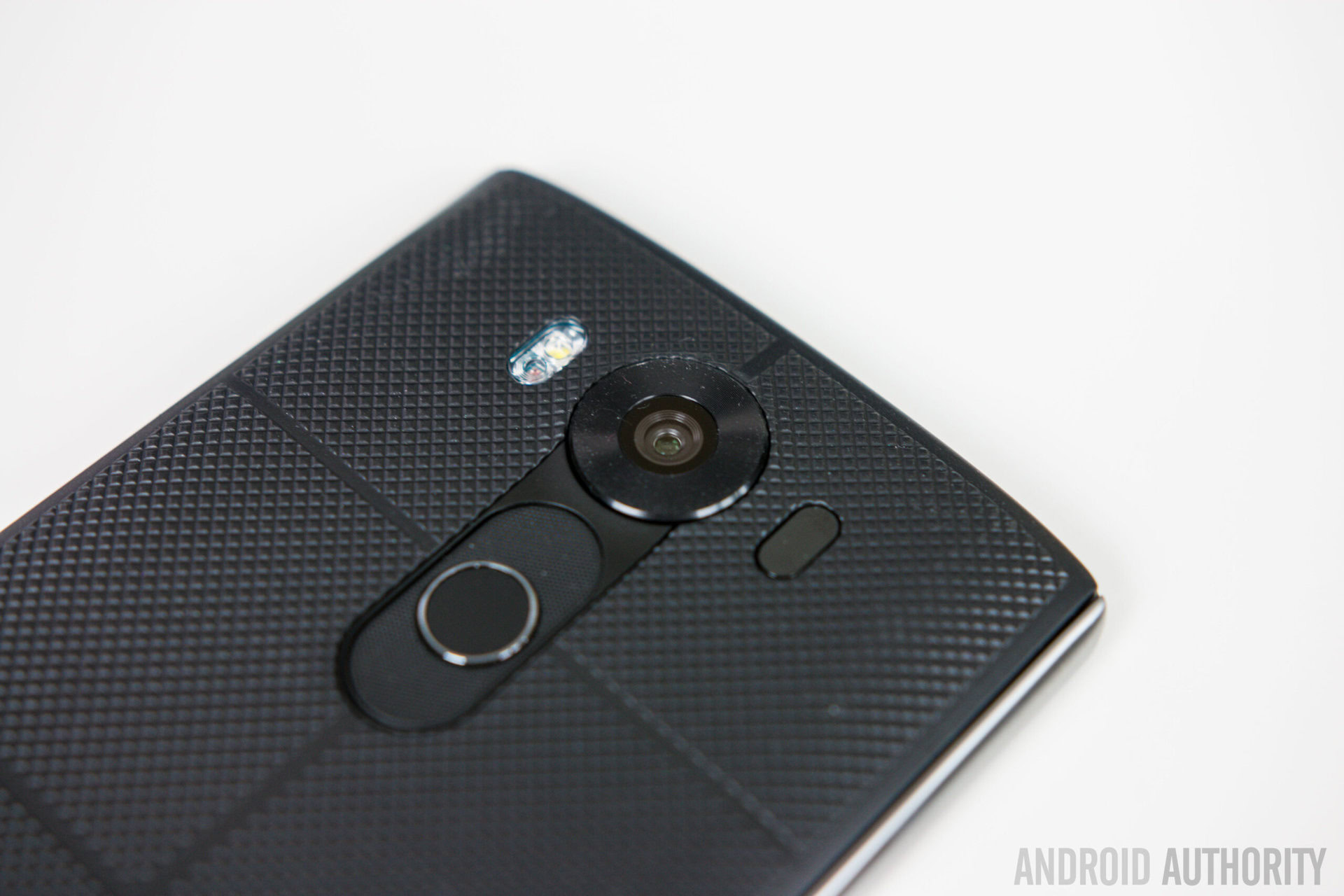
Other signature design elements are seen here as well, including the rear button layout below the camera unit. There is a fingerprint scanner integrated into the power button this time around, which is a new feature we haven’t seen from LG in the past. The back cover is also removable, allowing for access to the SIM card slot, the microSD card slot and the removable battery. LG is one of very few OEMs to still offer a removable battery in their smartphones, which is quite refreshing to see in a market where most other phone makers are forgoing this feature. A microphone and IR blaster are found up top, and at the bottom is the headphone jack, Micro USB port, a single speaker unit and a second microphone.
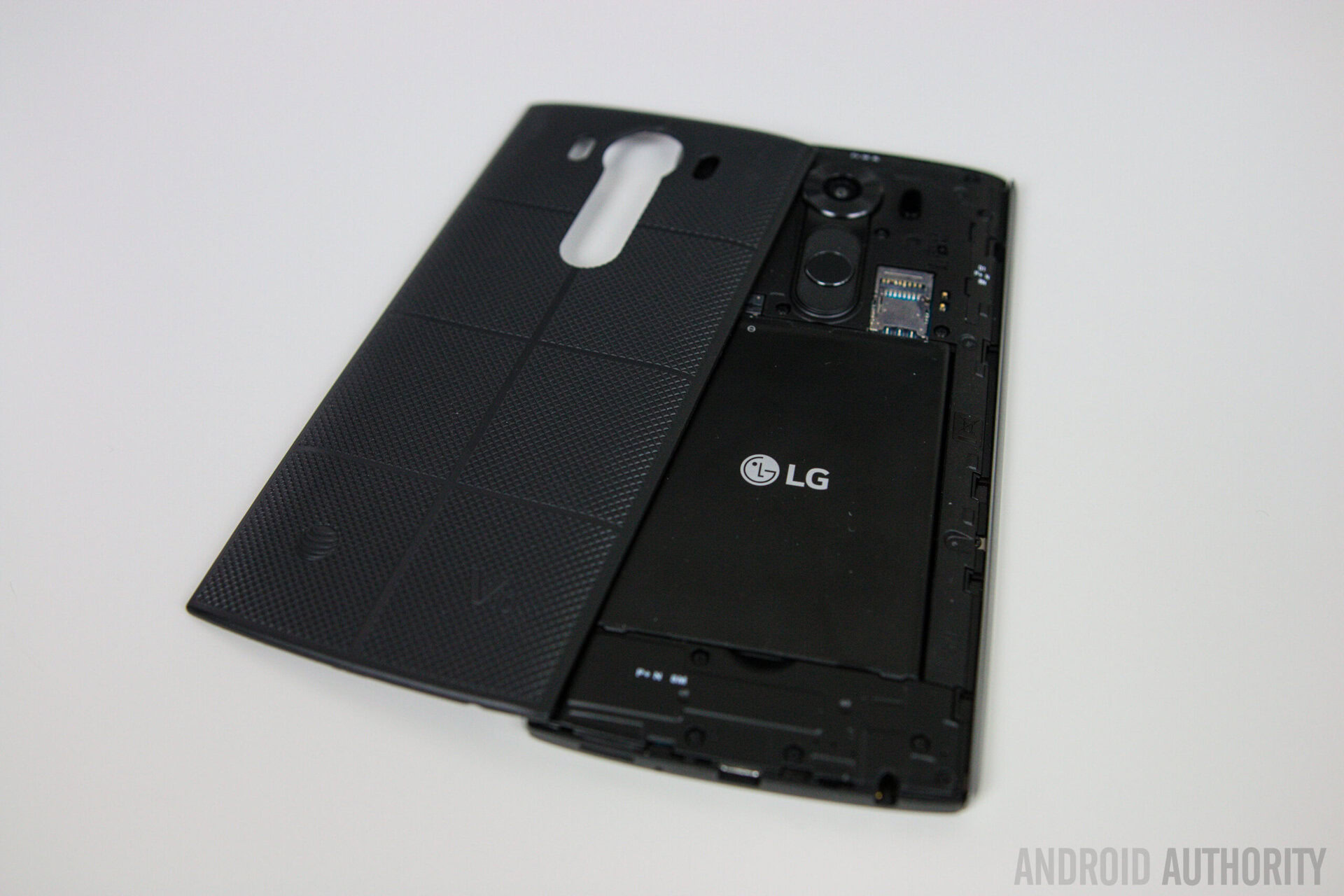
The overall handling experience isn't particularly comfortable
There is no getting around the fact that the LG V10 is a large smartphone. While the DuraSkin material offers enough grip to keep the device from falling out of your hands, the overall handling experience isn’t particularly comfortable. The main reason for this has to do with the display, or rather displays in this case, with the LG V10 coming with an extension to the screen at the top up front that results in a taller device. This can take some getting used to.
Display
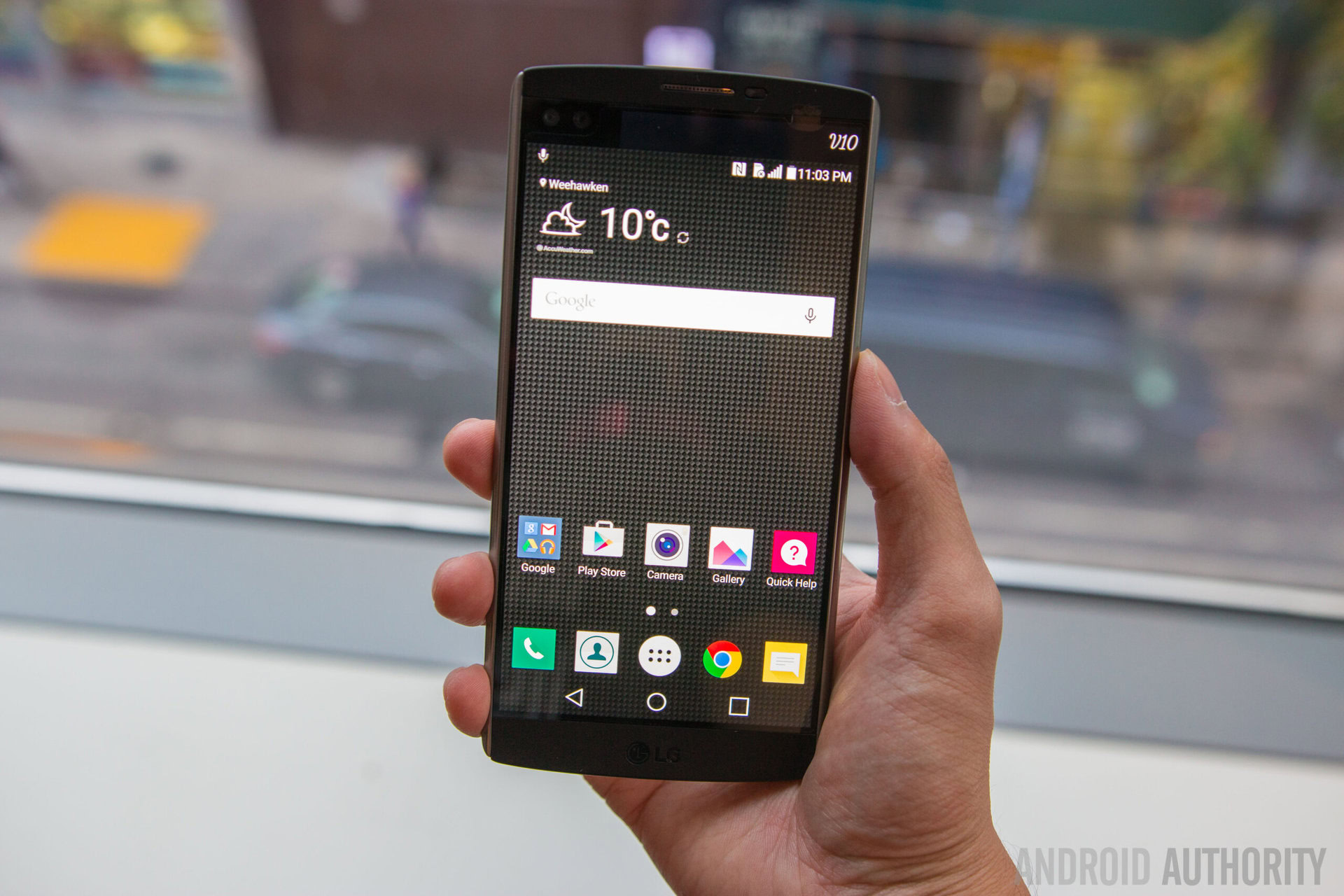
The LG V10 features a primary 5.7-inch IPS LCD display with a Quad HD resolution, resulting in a pixel density of 515 ppi. As expected, the display is beautiful, sharp, bright and easy to see outdoors. Media consumption and gaming centric users will certainly appreciate the large size. Overall, this display is nothing short of what you would expect from LG.
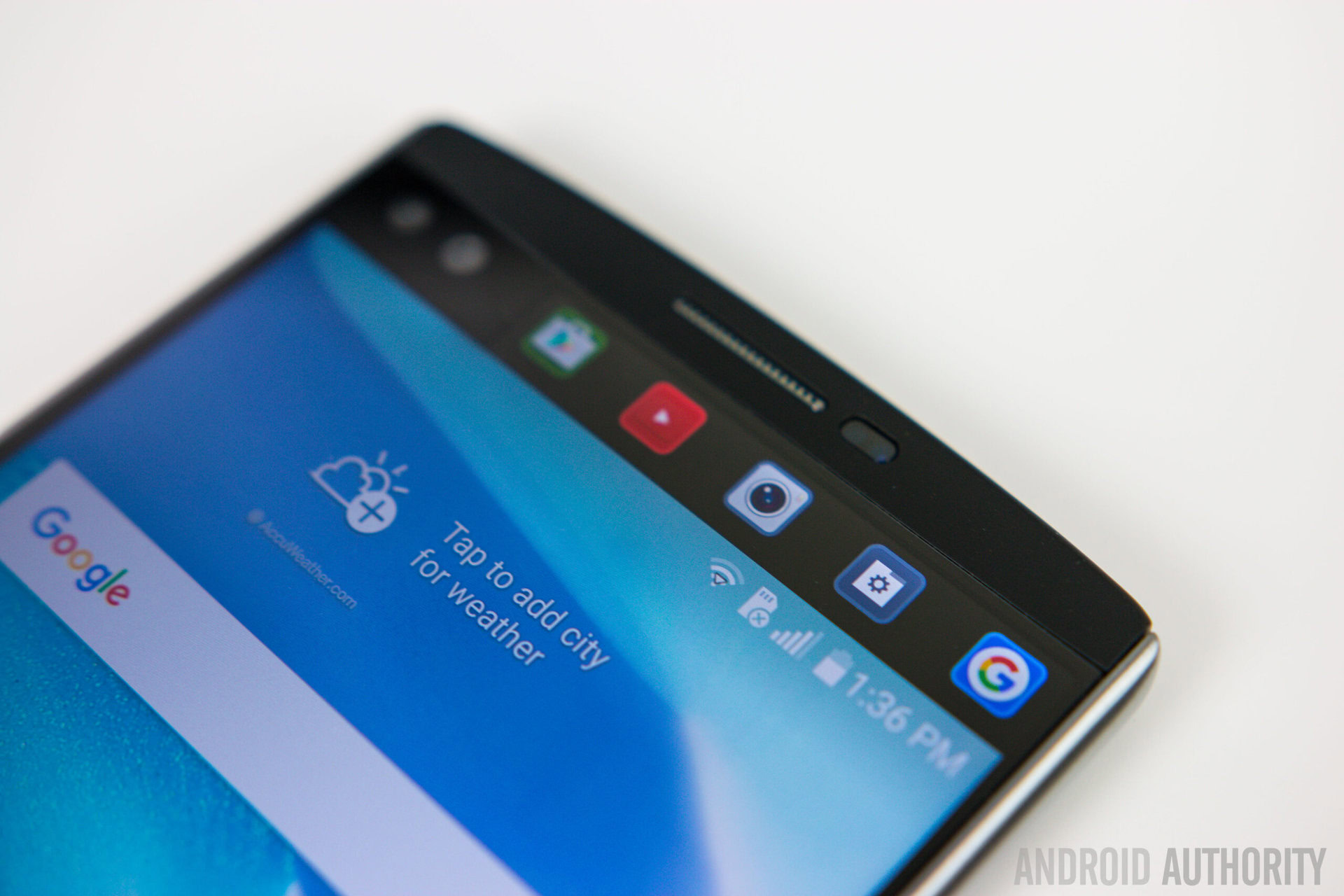
The main story here is the secondary screen at the top of the display. When taking into account the size of both screens combined, the screen is actually closer to 6 inches in size. This secondary screen works as a hub for notifications, application shortcuts, recently-opened apps, media controls, favorite contacts and upcoming calendar events. It will also show you basic information like the time and date when the main display isn’t on. All of these can be adjusted and modified in the Settings menu. And for a touch of personalization, you can have your name or a short message displayed here when the primary screen is off. Overall, its functionality is quite similar to what Samsung has on offer with their edge displays, but the LG V10 second screen does pack in a little more.
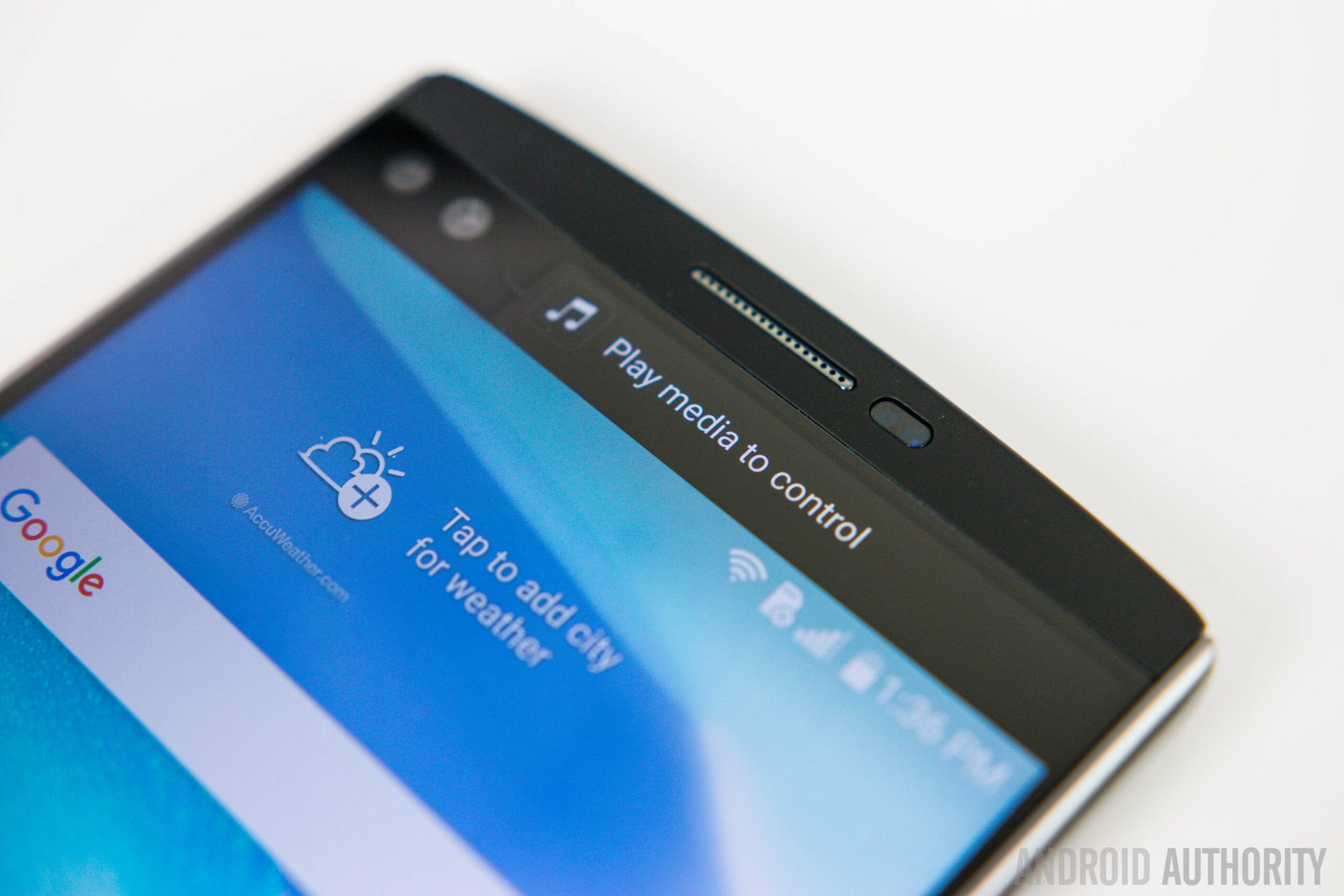
The second screen proves to be very useful when it comes to notification management, as it gives you the ability to see any missed calls or text messages without needing to wake up the primary display. When you’re using the device notifications will show up on the second screen, keeping the main display free from any distractions. This is great for gaming and watching videos.
The second screen is very useful when it comes to notification management
The issue with the second screen, and the reason for some skepticism, is where it sits on the device. Being at the top makes it very hard to reach in regards to one-handed use, and when using it for multi-tasking to quickly switch between apps, it doesn’t feel as quick because of how inconvenient the placement is. Even though the execution may not be perfect, the second screen does prove to be more useful than we initially thought.
Performance
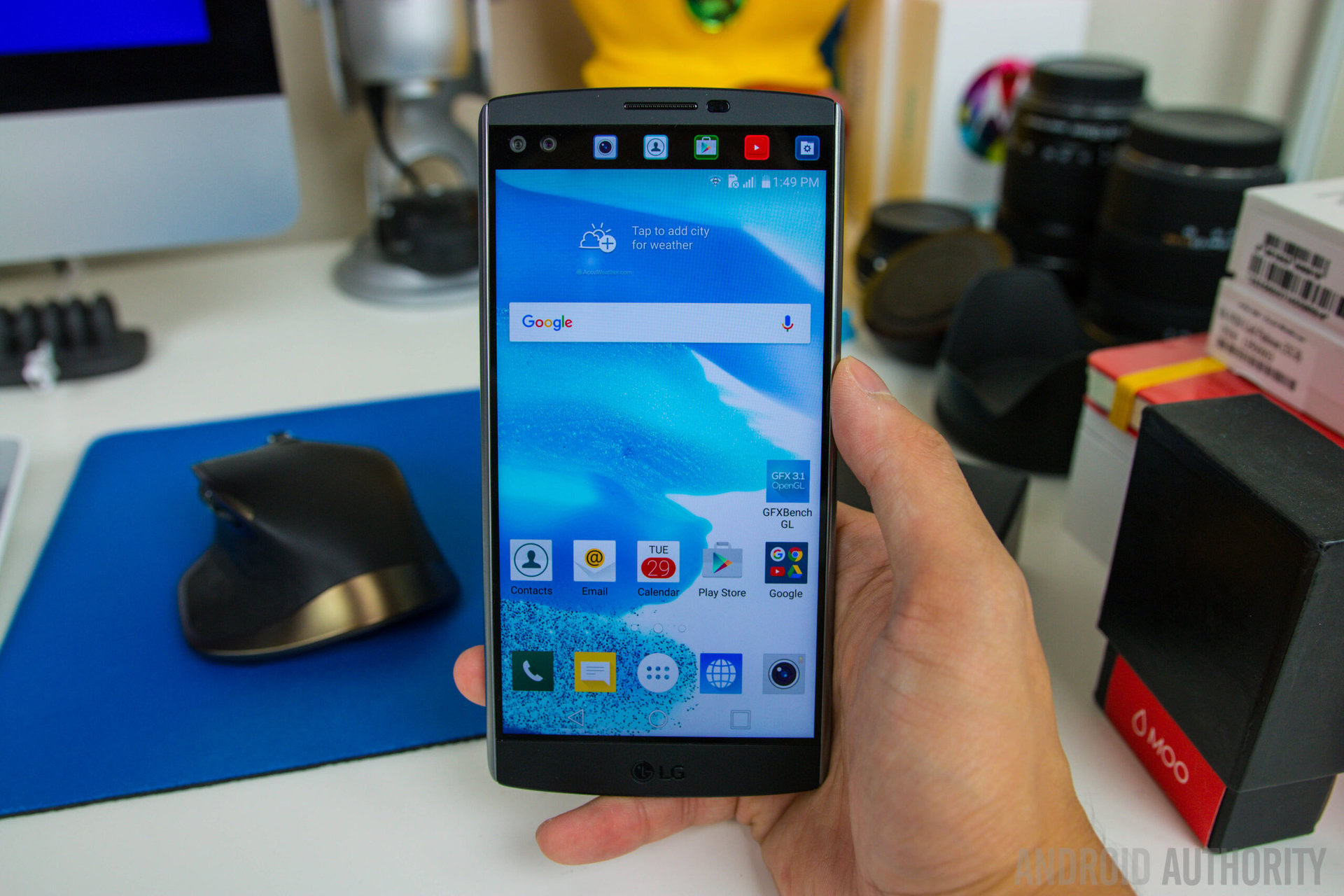
Under the hood, the LG V10 comes with an octa-core Qualcomm Snapdragon 808 processor, clocked at 1.82 GHz, and backed by the Adreno 418 GPU and 4 gigabytes of RAM. This is similar to the processing package found with its flagship counterpart, the G4, save for the additional gig of RAM. Performance is as you would expect from any current generation high-end smartphone.
Everything is fast, smooth, and responsive in day to day use, with very smooth animations and scrolling. The device handles everything quite well – from simple tasks such as opening applications and browsing the web, to more processor-intensive tasks like gaming and multi-tasking. Even with LG’s somewhat bloated software experience, the processing package keeps everything moving along just fine, and there were no instances of any noticeable slow down.
Hardware
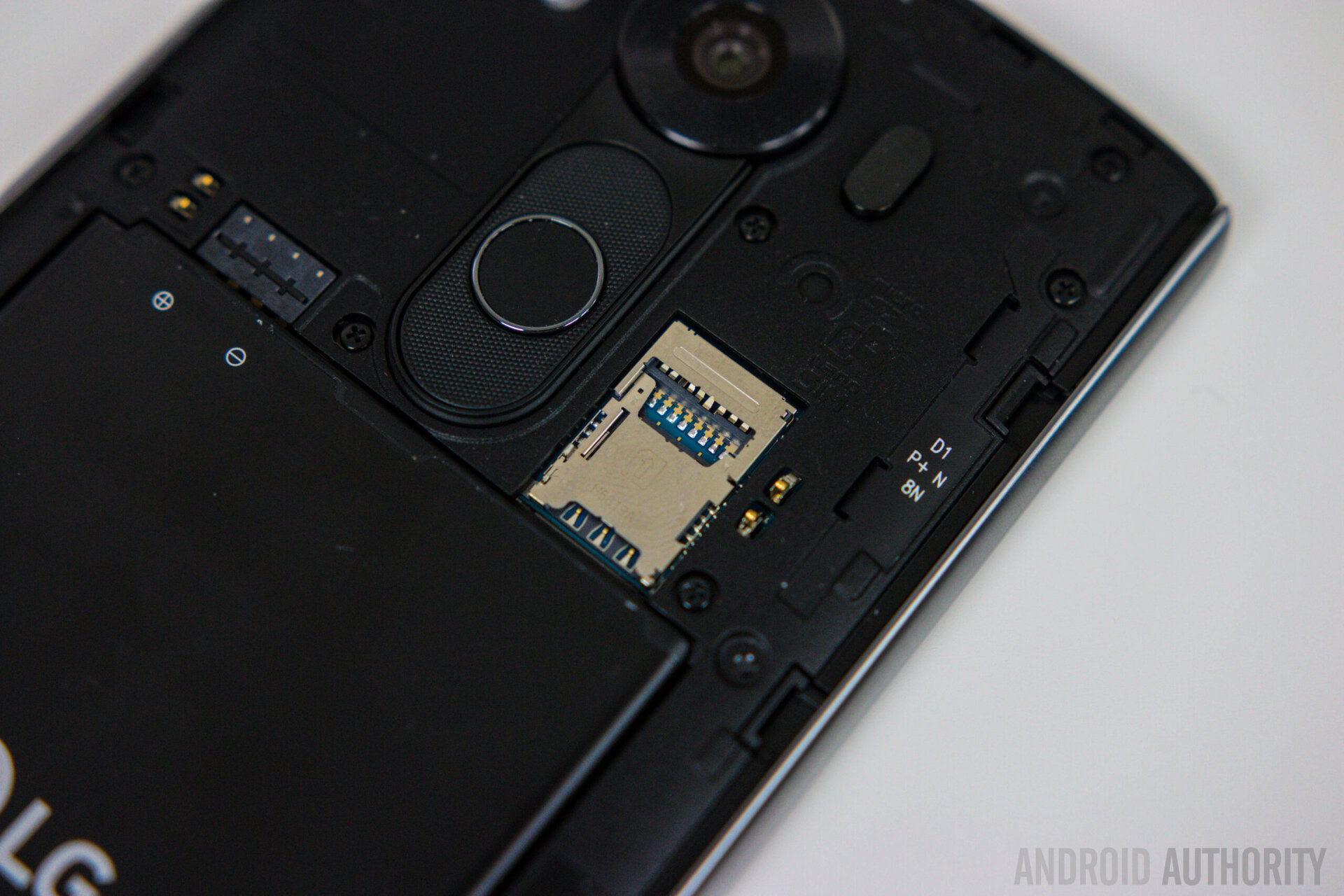
The only storage configuration available with the LG V10 is 64 GB, which should prove to be more than enough for most users. Of course, if you are concerned about meeting your storage needs, expandable storage via microSD is available as well, for up to an additional 2 TB.
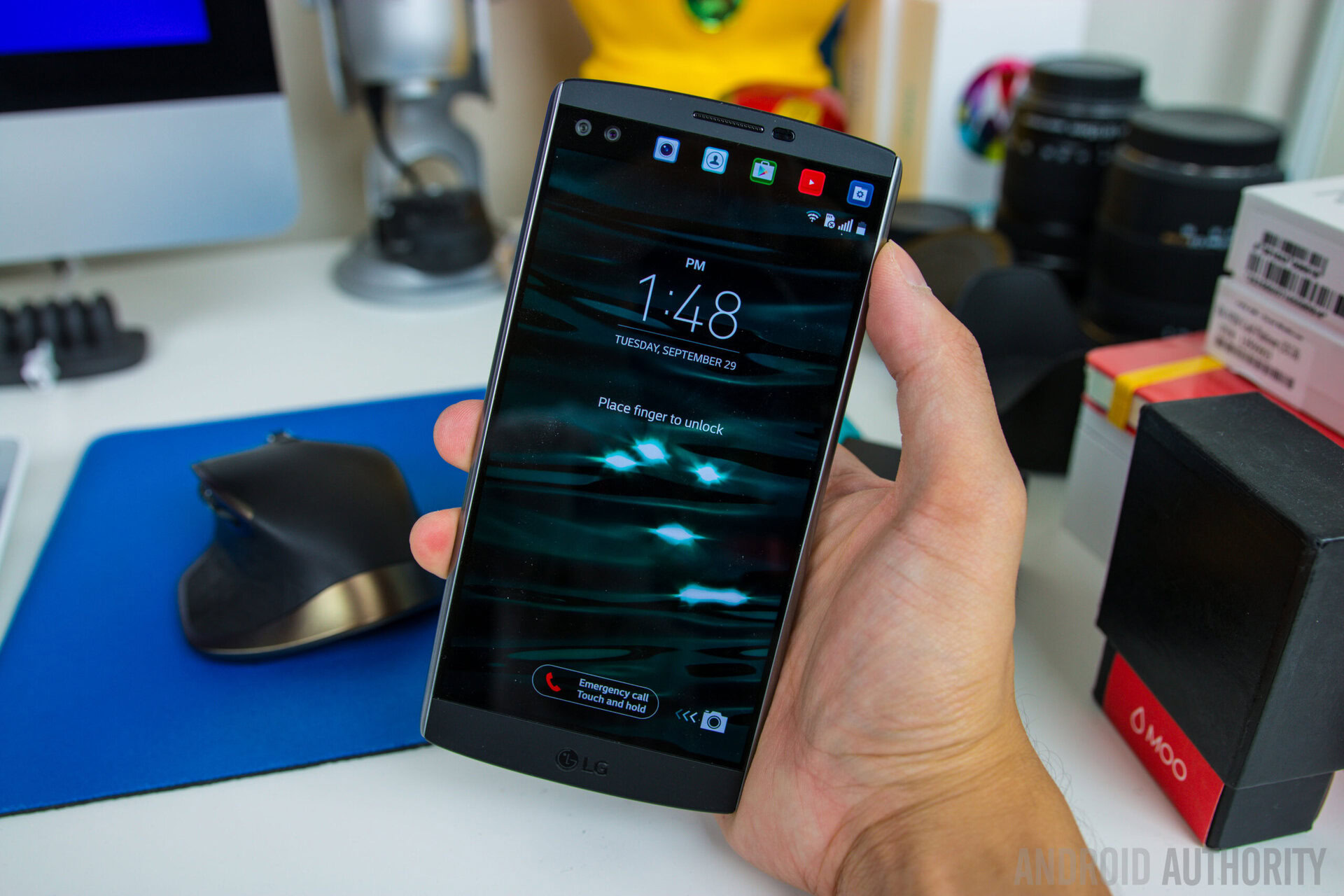
More notable in hardware is the addition of a fingerprint scanner, and its inclusion isn’t particularly surprising given how this is a feature that is becoming more and more common with other flagship devices. As previously mentioned, the fingerprint reader is embedded into the power button on the back. Overall, it’s a very solid first attempt by LG. The scanner helps unlock the device very quickly, but is unfortunately not the most accurate around.
The fingerprint reader could use some work
It works about 80% of the time with the first try, with a second attempt required in the other case. That’s not the biggest failure rate of course, but it is something that will get more frustrating the more you use it, especially given the very accurate fingerprint readers we’ve seen with some other flagship smartphones.
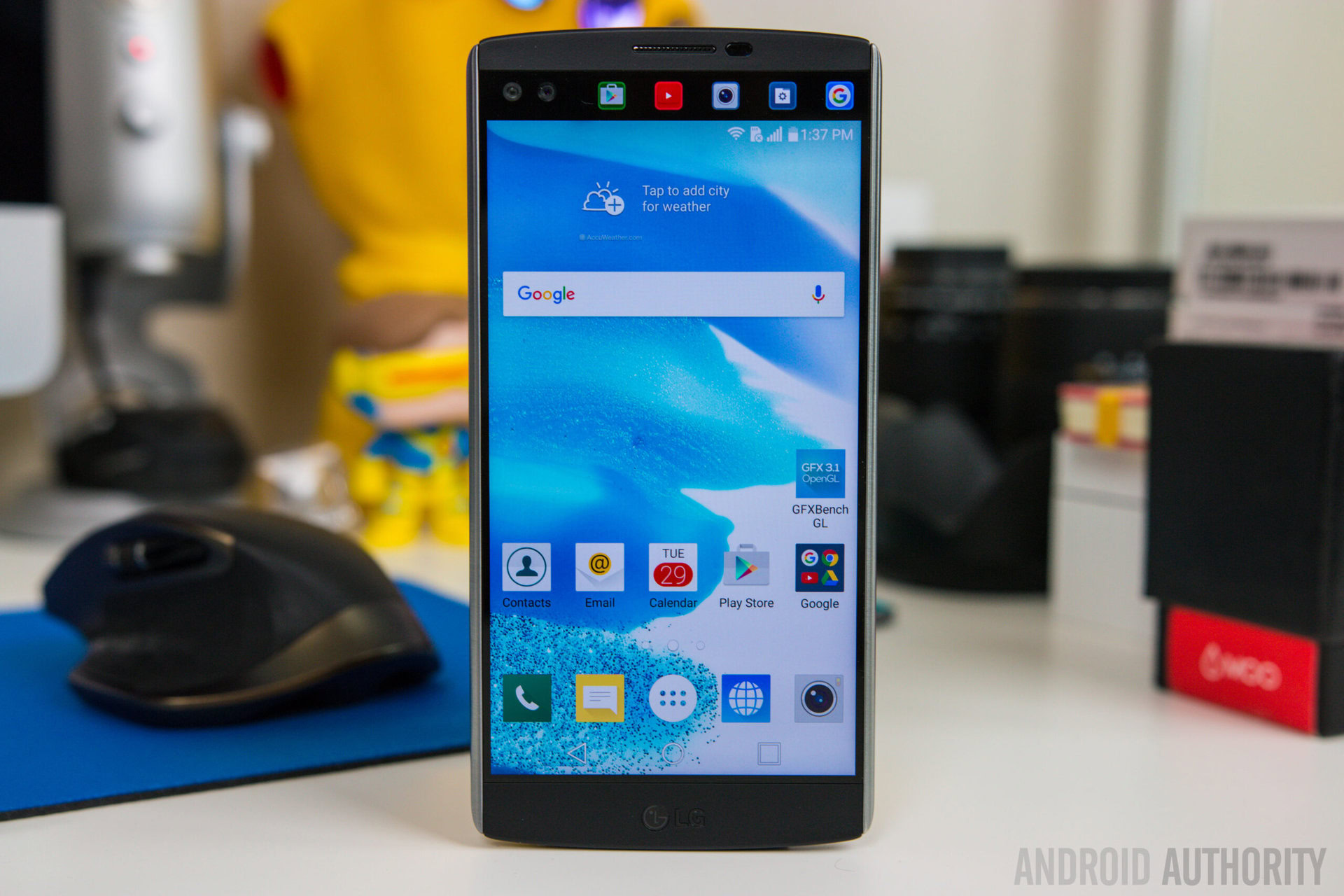
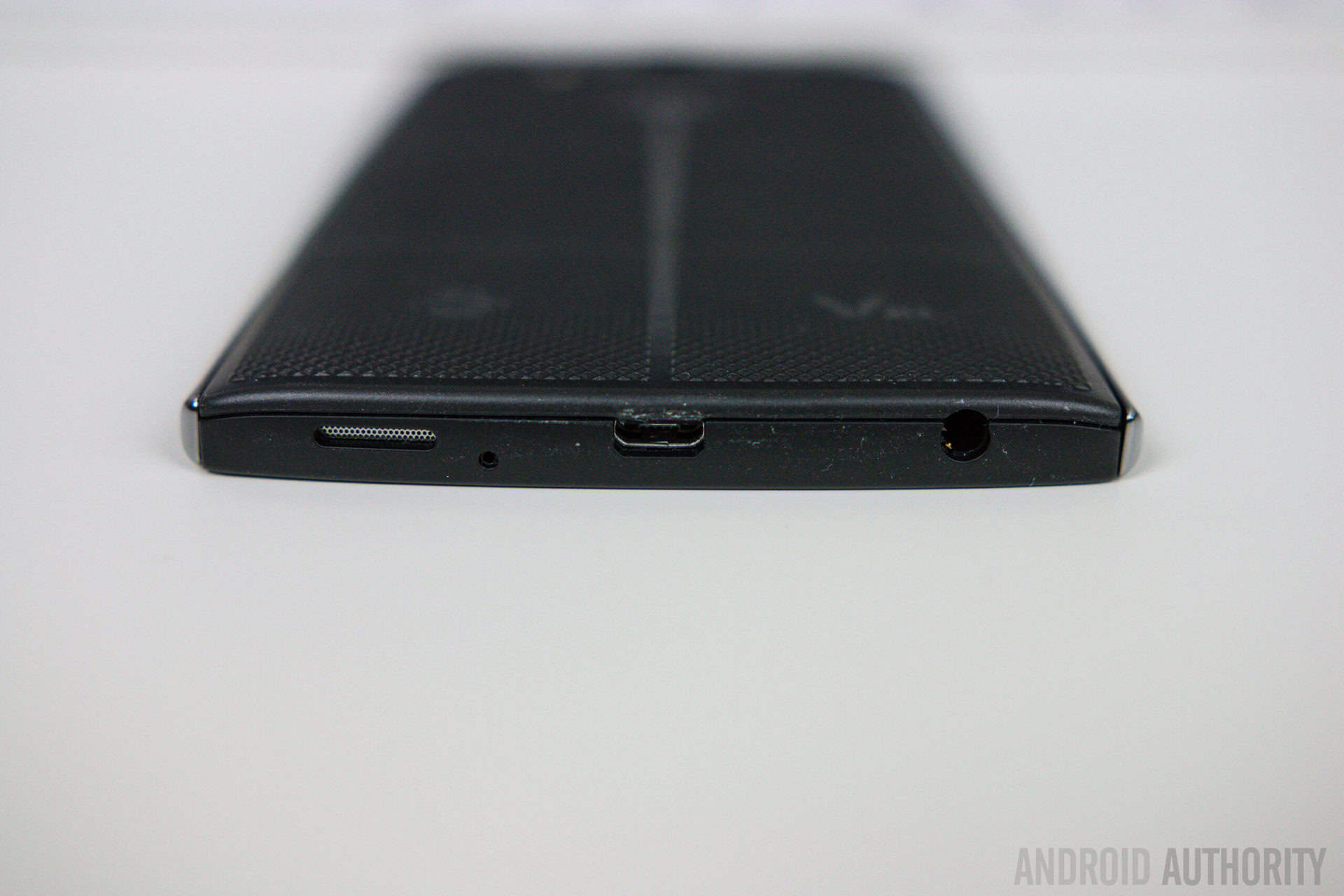
The bottom-mounted external speaker isn’t in the most optimal position, and it can be pretty easy to muffle when using the device in the landscape orientation. It does get quite loud, though, and the overall quality is fine. The highlight of the audio experience comes when using the device with headphones, with the device packing a 32-bit Hi-Fi digital to analog converter, which is a huge deal for anyone that uses their smartphone as the primary music player. It works with MP3 files as well as streaming audio, so you get to take advantage of it even when using apps like Spotify or Google Play Music. As long as you have a decent pair of headphones, you will definitely notice the difference the up sampling makes, allowing for a crisper and clearer sound.
The V10 has a battery that will last all day, but not much more than that
When it comes to the battery, the LG V10 features a 3,000mAh replaceable unit that proves to be good enough to last a full day with average use, but you will be hard-pressed to get a whole lot more than that. If using the device to take a lot of pictures or while playing a lot of games, you will find yourself needing to charge the device halfway through your day. On the bright side, charging the device doesn’t take too long, courtesy of its fast charging capabilities. Of course, you also have the option to carry around a spare battery if battery longevity is a concern.
You might also like: Best LG V10 cases
Camera
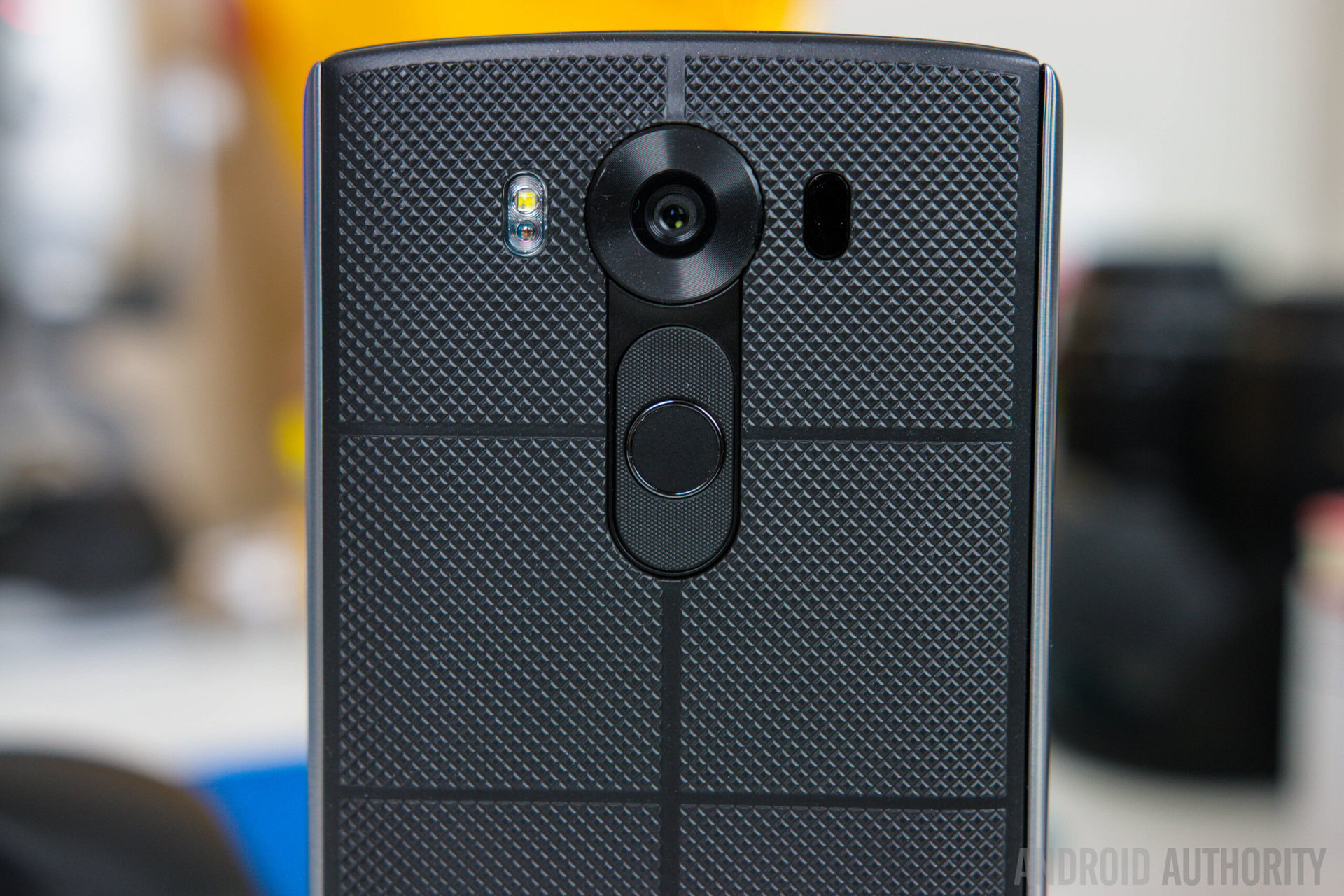
The LG V10 comes with a 16 megapixel primary camera with a f/1.8 aperture, optical image stabilization (OIS), and a laser-guided auto focus system. That is the same camera setup found with the LG G4, so it’s not surprising that the V10 is capable of taking some excellent photos. Images are sharp, with a lot of detail and accurate color reproduction, and the dynamic range is fantastic, making for a camera experience that is very enjoyable.
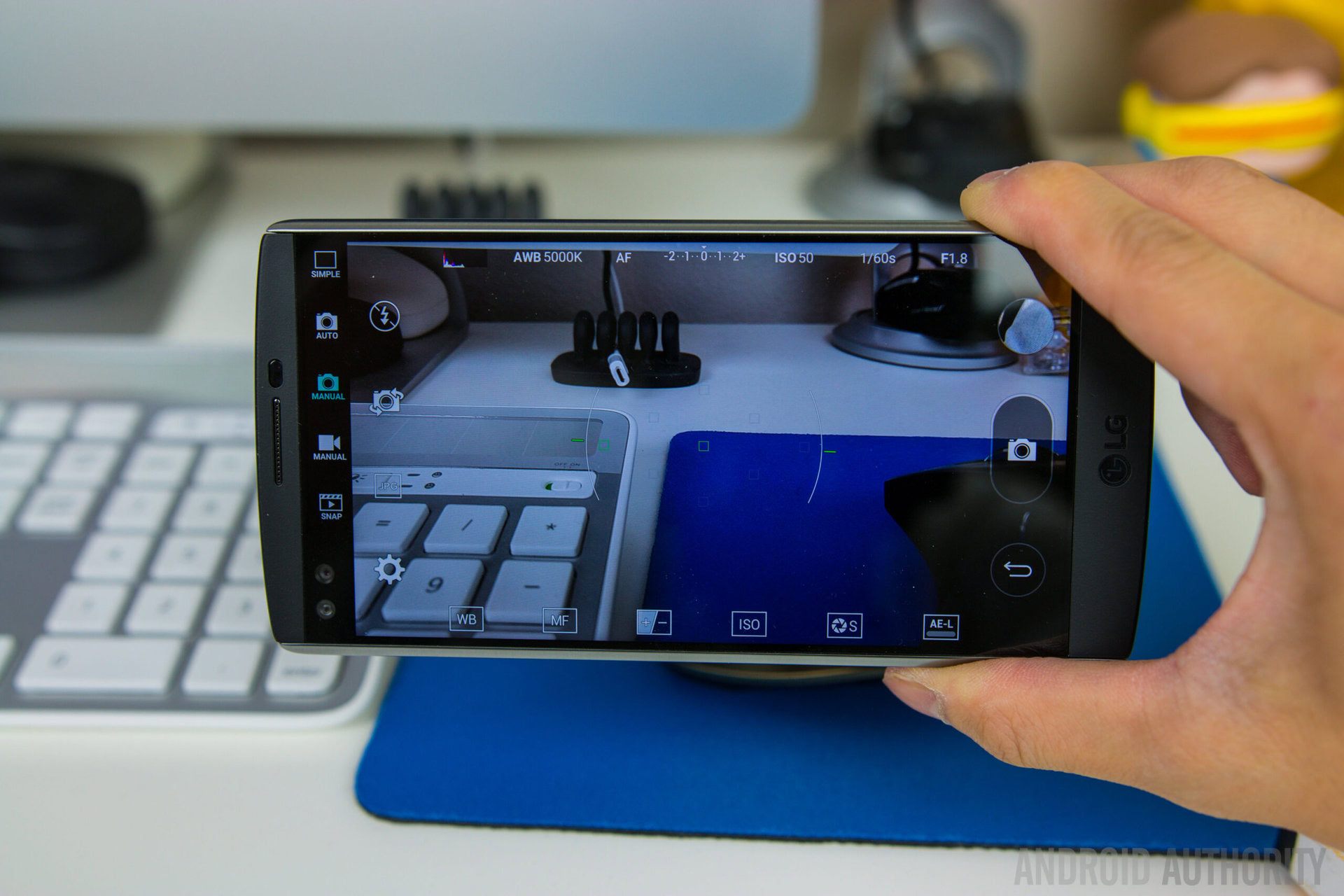
There is a hint of over sharpening in the images, but it isn’t too drastic and actually helps more than it hinders. In low-light conditions, the camera does tend to overexpose, especially in the highlights which are typically blown out. The camera also doesn’t get the white balance quite right at times, but aside from that, the images still retain a fair amount of detail and generally look pretty good.
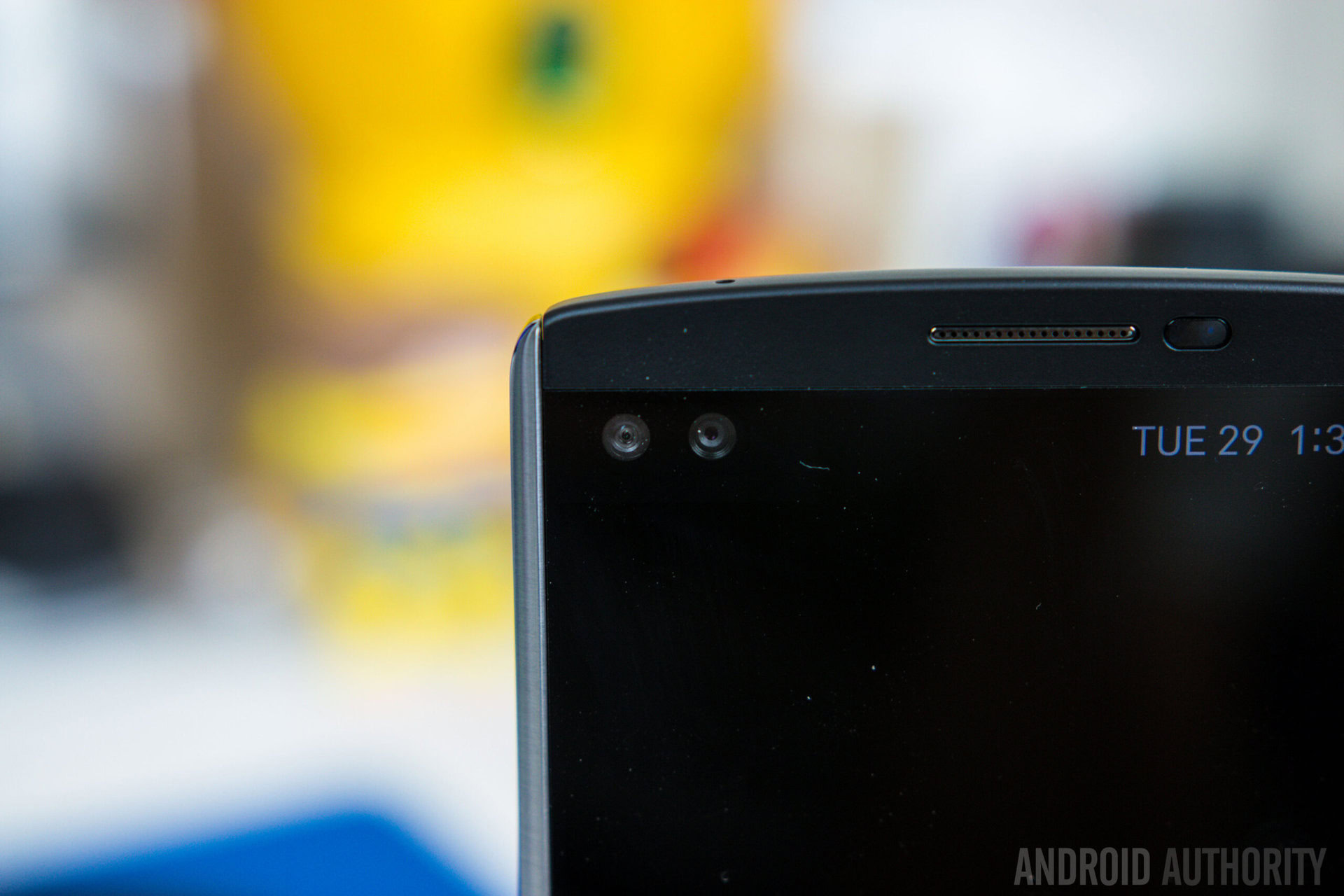
The device comes with not one, but two front-facing 5 megapixel cameras. We’ve seen dual camera setups in the past on other devices, but this is the first time that it has been found up front. Unlike other smartphones where the dual cameras help with depth information or 3D images, the two cameras of the V10 are just two individual front-facing shooters, with one featuring an 80-degree lens for a more standard field of view, while the other comes with a 120-degree wide angle lens. You can toggle back and forth between the two within the camera software, and the 120-degree wide angles lens comes in handy when trying to take group shots. The overall quality of these front-facing cameras is quite good as well.
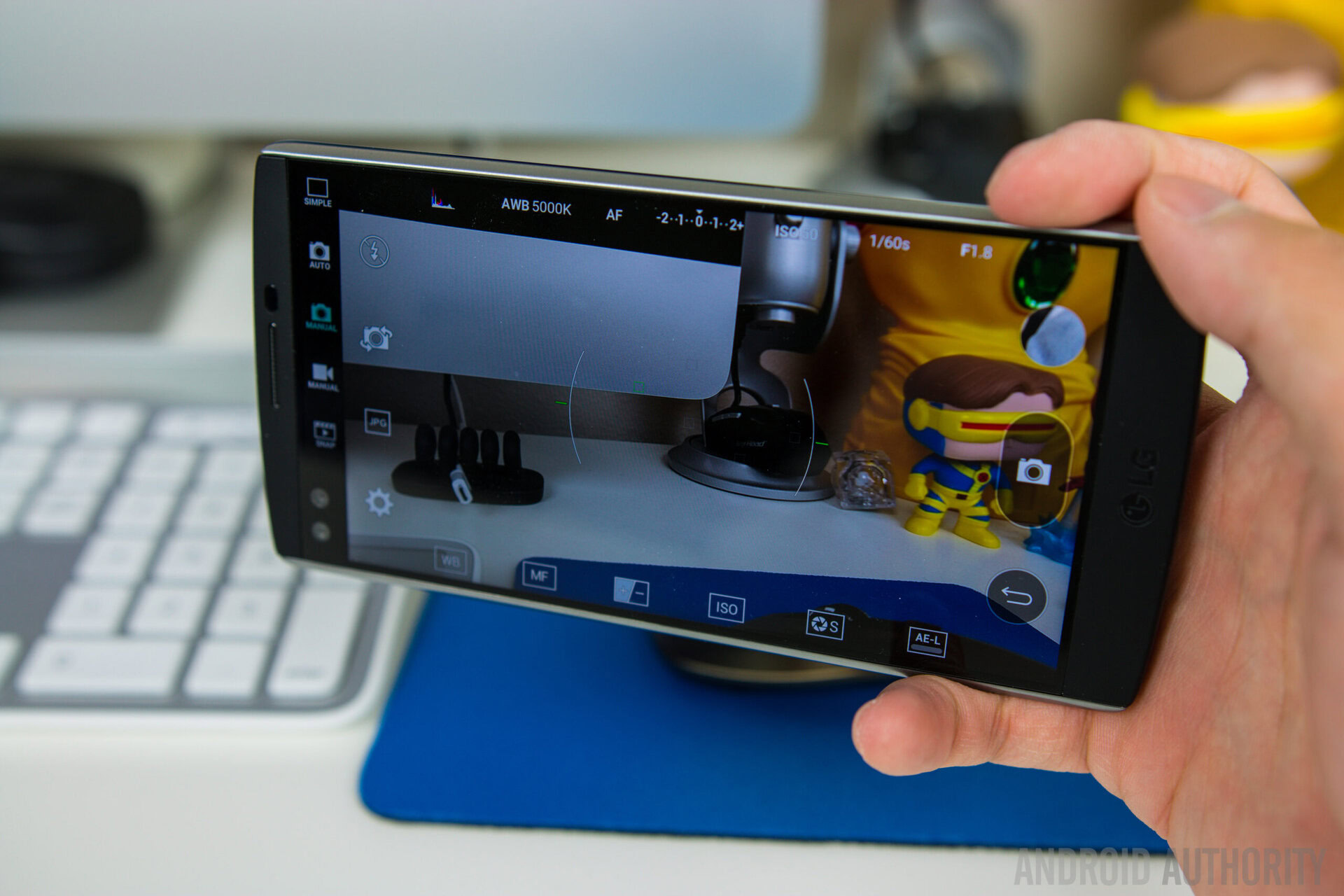
When the LG G4 was released earlier this year, there was a lot of hype surrounding the DSLR-like manual controls that were available with the device, along with the ability to shoot in the RAW format. We’re happy to report that these features have made their way over to the LG V10. Additionally, the V10 also brings these manual controls over to video recording as well, which is a pretty big deal for a smartphone camera.
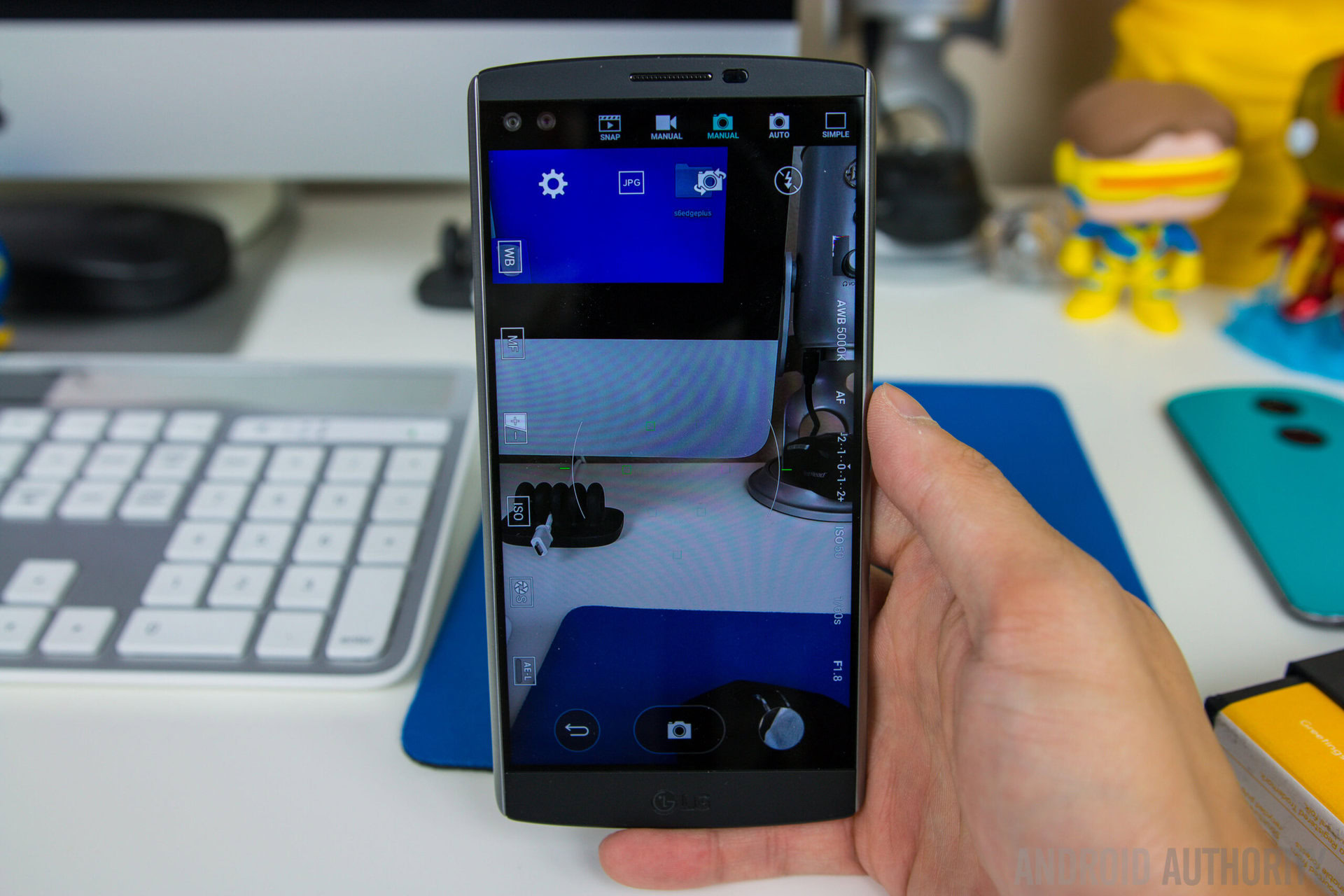
Now, you can do many of things you would normally do with a DSLR camera, like adjust white balance, ISO, shutter speed, and manually control the focus. Videos can be recorded in 4K, 1080p, and slow motion, and you can even record in a cinematic mode that bumps the frame rate down to 24 fps for a truly cinematic look. Having good audio when shooting videos is very important as well, and the V10 allows you to easily monitor the audio in real time, adjust the audio levels, change the direction of the audio recording, and even eliminate interference using the wind noise filter.
There is also a new Steady Mode built-in that is designed to remove motion blur, even more so than what OIS is capable of. It only works when recording in 1080p or lower, but the footage is very smooth, stable, and almost looks like something you would get when using a gimbal or some sort of handheld rig. There is also another new feature called multi-view recording that lets you use all 3 cameras simultaneously to really offer some perspective. It can be a lot of fun to use in the right scenarios.
If you're a fan of smartphone videography, you're going to be happy with the LG V10
All of these manual controls are great, and if you are seriously into smartphone videography, you’re going to be very happy with the LG V10. The biggest problem with videos is that they’re not easily shareable on social media due to the large file sizes, but LG’s video editing software lets you easily edit the video into a 15 second highlight reel at the touch of a button, which makes it a lot easier to share, and not so coincidentally, is the same length as an Instagram video.
Software
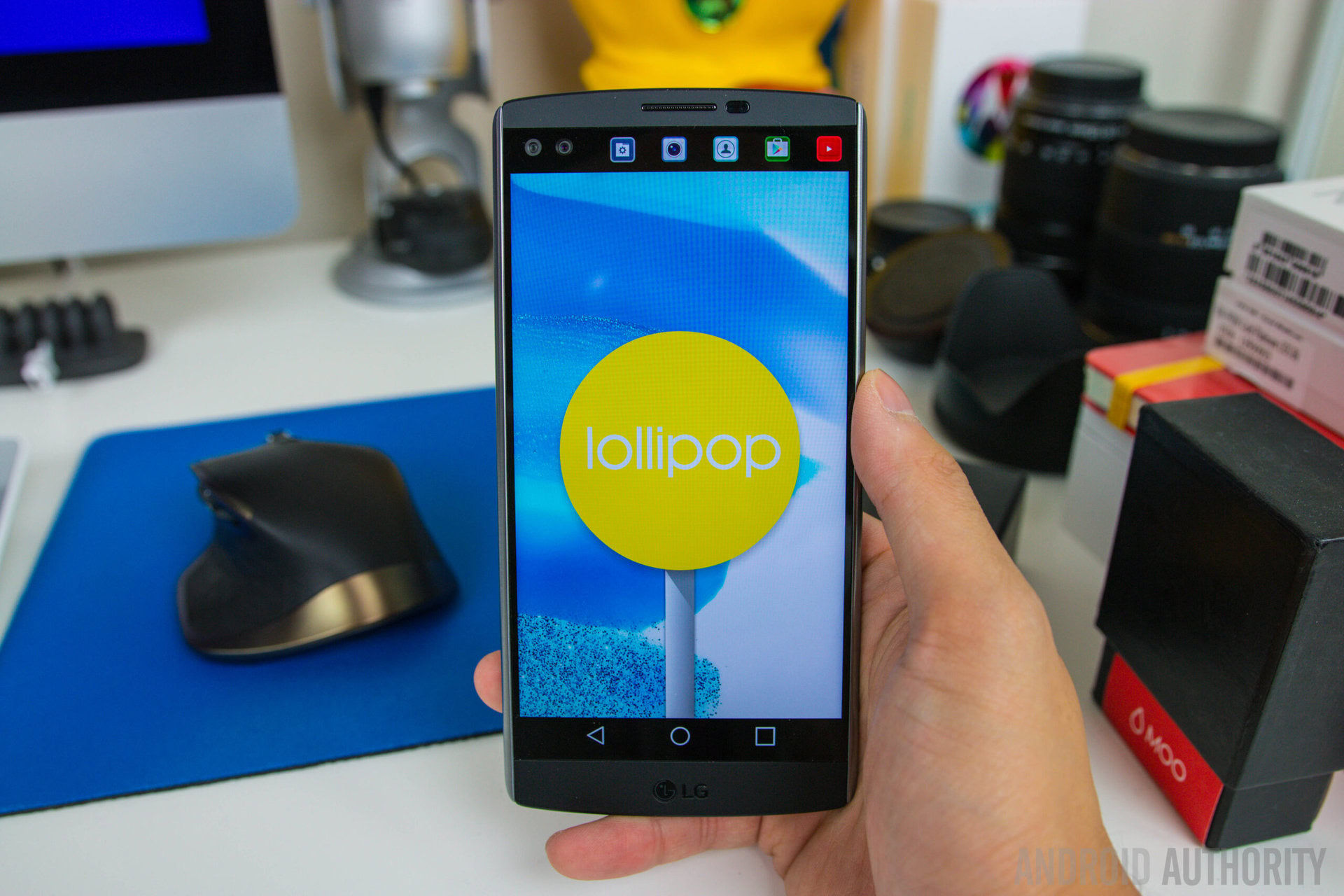
The LG V10 comes with Android 5.1.1 Lollipop out of the box, with LG promising an official upgrade to Android 6.0 Marshmallow by the end of the year, or early next year. Granted, that a very vague time frame, but one can only hope that the update is made available soon.
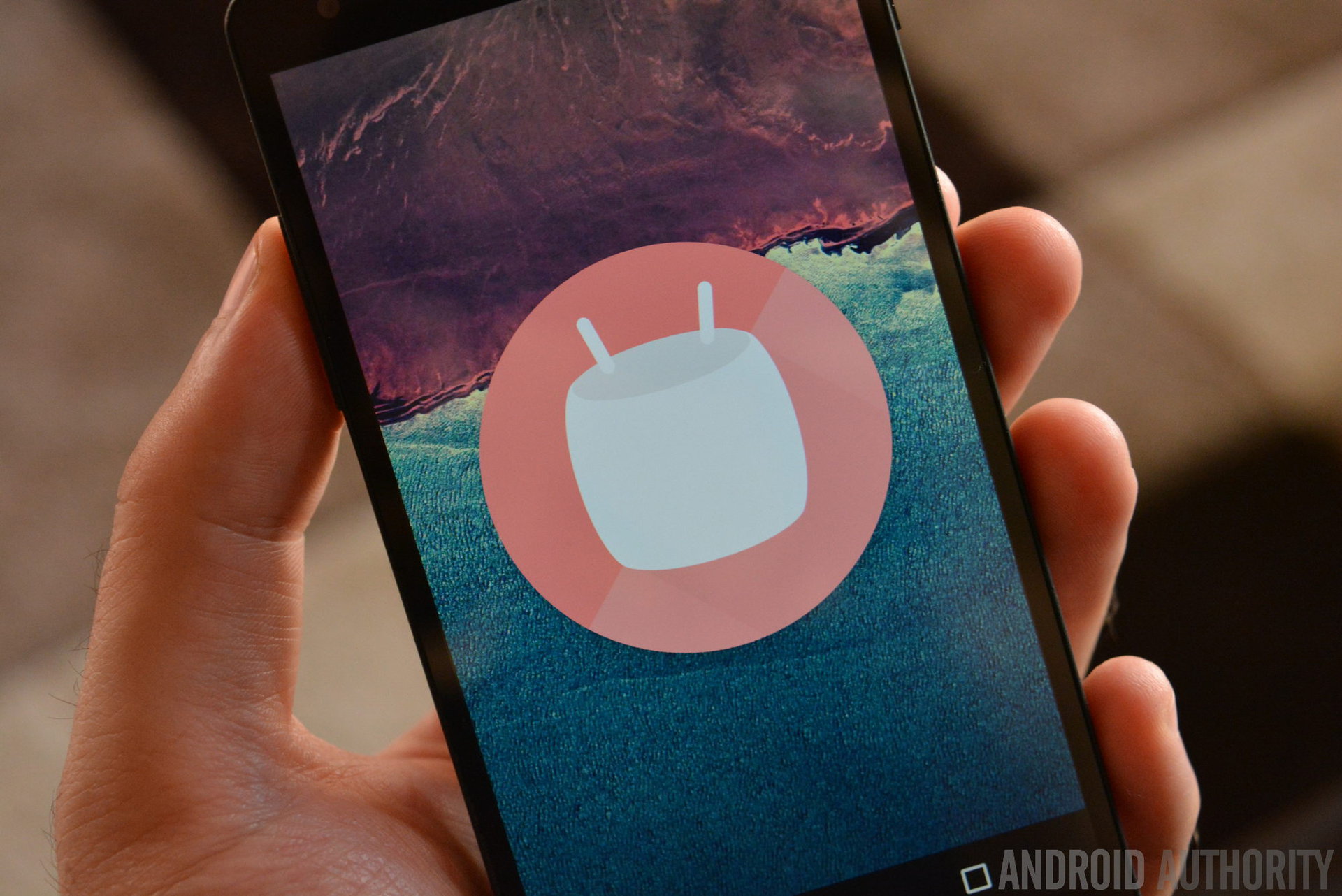
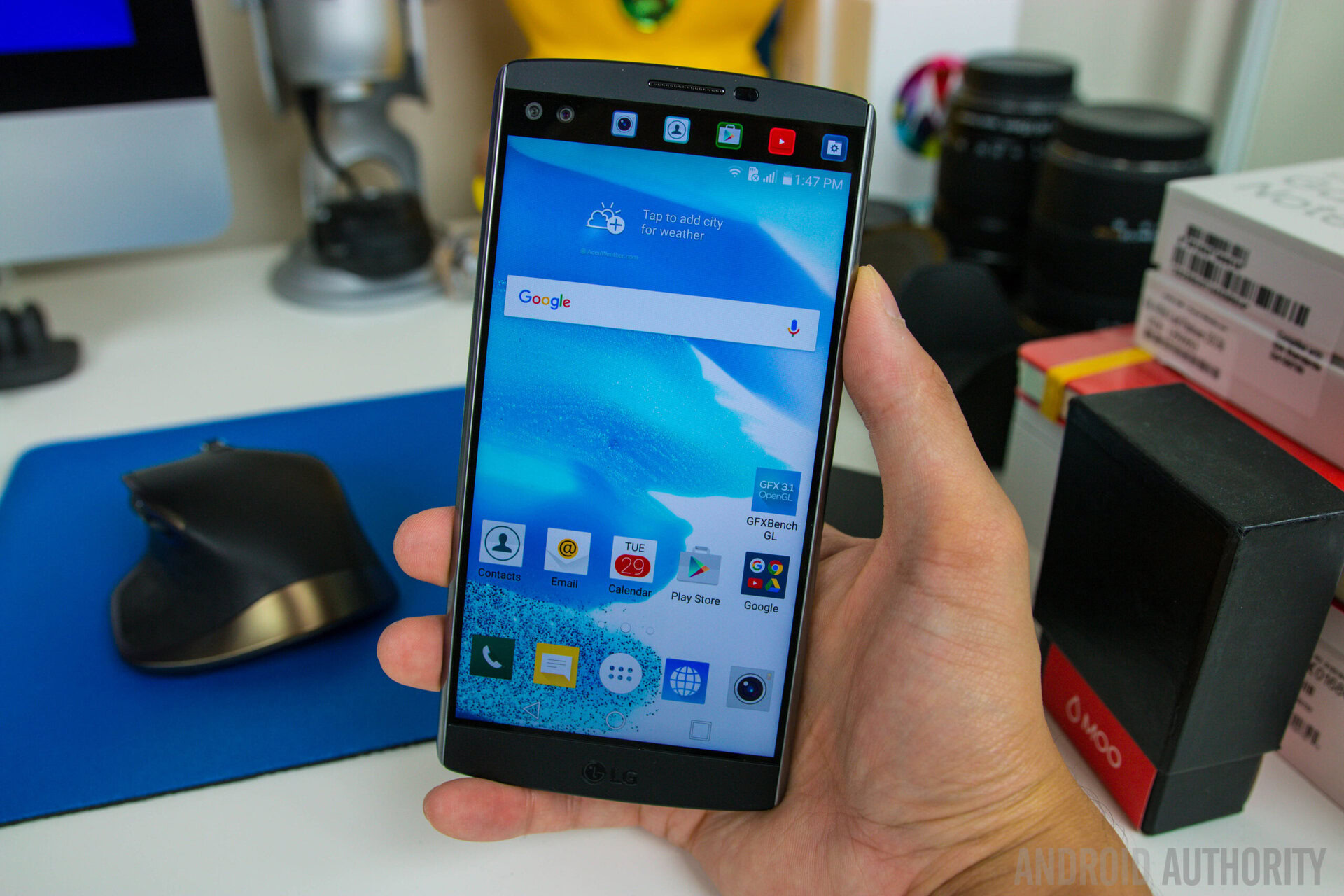
The software experience itself will be pretty familiar to anyone who has used an LG smartphone within the last couple of years. With the exception of the features associated with the secondary display, the software package is largely identical to what is seen with the LG G4. LG’s take on Android is still not the most attractive around, with things like the Settings menu being just as cluttered and convoluted as before.
There are a bevy of features that fans of LG have become accustomed to over the years to be found here though, such as double tap to wake, Knock Code, dual-window, and the ability to re-size the keyboard for easier typing. Given its large size, also useful is the option to shrink the screen and re-size it by swiping across the on-screen navigation keys, intended to help with one-handed use.
Specifications
| LG V10 | |
|---|---|
Displays | Main: 5.7-inch IPS Quantum Display with 2560 x 1440 resolution, 513ppi Secondary: 2.1-inch IPS Quantum Display with 160 x 1040 resolution, 513ppi |
Processor | Qualcomm Snapdragon 808 |
GPU | Adreno 418 |
RAM | 4GB of LPDDR3 RAM |
Storage | 64GB |
MicroSD | Yes, up to 2TB |
Fingerprint scanner | Yes |
Network | LTE-A Cat. 6 |
Connectivity | Wi-Fi 802.11 a, b, g, n, ac / Bluetooth 4.1 / NFC / USB 2.0 |
Software | Android 5.1.1 Lollipop |
Camera | 16MP rear-facing camera, f/1.8 aperture and OIS 2.0 5MP Dual Lens front-facing camera, (80o Standard Angle / 120o Wide Angle) |
Battery | 3000mAh, removable |
Dimensions | 159.6 x 79.3 x 8.6mm, 192g |
Colors | Space Black, Luxe White, Modern Beige, Ocean Blue, Opal Blue |
Gallery
Pricing and final thoughts
The LG V10 is now available from Verizon Wireless, T-Mobile and AT&T, falling within the $600 – $700 price range off-contract. If that’s more than you’re comfortable spending, you can pick up the device from these carriers at a subsidized rate.
